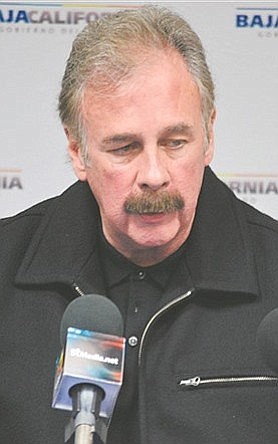 Facebook
Facebook
 X
X
 Instagram
Instagram
 TikTok
TikTok
 Youtube
Youtube
During 2014, Baja California tourism struggled to recover from multiple setbacks but was buoyed by visitors of Mexican-American descent, according to a year-end report by the state secretary of tourism.

During 2014, 52 percent of Baja tourists described themselves as “of Mexican-American origin,” compared to just 37 percent who described themselves as natives of the U.S., tourism secretary Óscar Escobedo Carignan said in a radio interview republished in several Baja newspapers on New Year's Eve.
Tourists of Mexican-American descent were apparently less likely than their U.S.-born counterparts to be discouraged from visiting Baja because of periodic warnings from the U.S. State Department that travel in the region could be dangerous.
Escobedo also noted that Baja tourism has failed to recoup major losses of European and Asian visitors and said his office continued looking for ways to draw them back.
Among the most significant obstacles to tourism during the past year, Escobedo cited the December 28, 2013, collapse of a section of the scenic highway between Tijuana and Ensenada (which remained closed for 353 days before re-opening) and an increase of 5 percent in the federal sales tax, from 11 percent to 16 percent.
Nonetheless, said the tourism secretary, the closure of the scenic highway came with some positives: tourism in San Felipe and Rosarito increased to levels not seen for six years.
Another bright spot, he said, were the 700,000 passengers aboard cruise ships that stopped in Ensenada, though only 60 percent of them left their ship to pass time in the city's tourist district.
Altogether, said Escobedo, cruise-ship visits to Ensenada added $23.6 million to the local economy.

During 2014, Baja California tourism struggled to recover from multiple setbacks but was buoyed by visitors of Mexican-American descent, according to a year-end report by the state secretary of tourism.

During 2014, 52 percent of Baja tourists described themselves as “of Mexican-American origin,” compared to just 37 percent who described themselves as natives of the U.S., tourism secretary Óscar Escobedo Carignan said in a radio interview republished in several Baja newspapers on New Year's Eve.
Tourists of Mexican-American descent were apparently less likely than their U.S.-born counterparts to be discouraged from visiting Baja because of periodic warnings from the U.S. State Department that travel in the region could be dangerous.
Escobedo also noted that Baja tourism has failed to recoup major losses of European and Asian visitors and said his office continued looking for ways to draw them back.
Among the most significant obstacles to tourism during the past year, Escobedo cited the December 28, 2013, collapse of a section of the scenic highway between Tijuana and Ensenada (which remained closed for 353 days before re-opening) and an increase of 5 percent in the federal sales tax, from 11 percent to 16 percent.
Nonetheless, said the tourism secretary, the closure of the scenic highway came with some positives: tourism in San Felipe and Rosarito increased to levels not seen for six years.
Another bright spot, he said, were the 700,000 passengers aboard cruise ships that stopped in Ensenada, though only 60 percent of them left their ship to pass time in the city's tourist district.
Altogether, said Escobedo, cruise-ship visits to Ensenada added $23.6 million to the local economy.
Comments